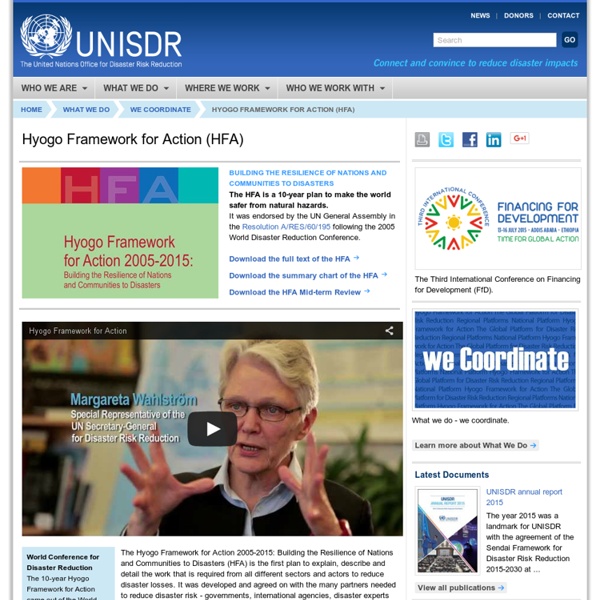Hyogo Framework for Action (HFA)

Resilient Nation
We live in a brittle society, states UK think tank Demos. "Over 80 per cent of Britons live in urban areas relying on dense networks of public and private sector organisations to provide them with essential services. But our everyday lives and the national infrastructure work in a fragile union, vulnerable to even the smallest disturbances in the network. And both are part of a global ecosystem that is damaged and unpredictable. How does Britain protect against these risks? Much of our infrastructure is outmoded and archaic. This pamphlet calls for a radical rethink of resilience. Resilience is an everyday, community activity. The project was supported by ARUP.
The Rural Resilience Index | Disaster Risk Resilience Planning Network
The Rural Resilience Index The Rural Resilience Index (RRI) The RRI is based in the principle that resilience starts from the ground-up, not the top down, and that it requires a whole-of-community approach. Those living in rural, remote and coastal communities have the most knowledge of what resources and capacities exist, where the gaps are, and what is needed to address those gaps. The RRI is a simple, flexible, comprehensive tool that allows communities to assess their strengths and assets as well as their risks and vulnerabilities in order to develop concrete, place-based action plans to improve resilience. Designed to help communities asses their strengths and assets across a range of community characteristics and resources, the RRI consists of two major categories of resilience: Community Resources, and Disaster Management. Community Resources: This assessment category examines a wide range of community characteristics and processes. Hazard Resilience and Assessment Tools
Understanding resilience | Global | Aid Policy | Early Warning | Economy | Environment | Food Security | Governance | Health & Nutrition | Natural Disasters | Sahel Crisis | Water & Sanitation
Climatic shocks have forced agencies to think "resilience" JOHANNESBURG, 4 March 2013 (IRIN) - No one working in the aid community in recent years could have avoided the buzzword “resilience” - but what does the term mean practically, and how has it helped shape action on the ground? In fact, there is no standard definition of the term, points out a draft paper by the UN Development Programme (UNDP). The UN’s lead development agency, along with the Office for Coordination of Humanitarian Affairs (OCHA), has been tasked with finding ways to consider how development and humanitarian actors can work better together on resilience. The UN International Strategy for Disaster Reduction defines the term as “the ability of a system, community or society exposed to hazards to resist, absorb, accommodate to and recover from the effects of a hazard in a timely and efficient manner.” "Resilience is more of a process than an outcome" Development or humanitarian? Remember early recovery? jk/rz/oa
untitled
Related:
Related:



